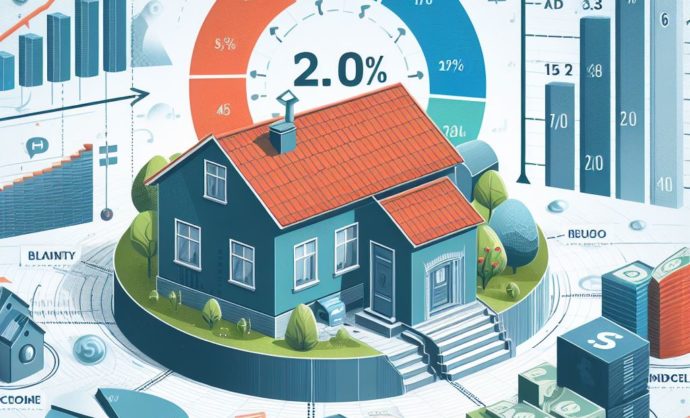Financial institutions consider many indicators about the borrower before granting a mortgage loan. The debt ratio is one of these elements. It is one of the most important criteria for obtaining a mortgage. Discover the debt ratio with your mortgage broker and learn how to calculate it.
The creditworthiness of a loan applicant is very important to a lending institution. Before approving an application, the lending institution analyzes the borrower’s profile and determines whether he or she is able to repay a loan. The debt ratio is the appropriate indicator for this purpose. It is systematically evaluated to know the borrower’s situation before granting him a credit.
The debt ratio can concern one borrower or both co-signers of a loan. This unit of measurement gives an idea of the financial situation of a loan applicant. The debt-to-income ratio is an indicator of the weight of the loan applicant’s debts in relation to their resources.
The higher this indicator is, the more of the borrower’s finances are devoted to debt repayment and the more likely he or she is to have difficulty paying off a new loan. When the debt ratio is low, the borrower’s budget is fairly consistent. This means that the borrower has a better chance of getting a favorable loan approval.
To calculate the debt ratio of a borrower, it is necessary first to total all his usual monthly charges that generate debt. Once the sum of all these debts is obtained, it must be divided by the total amount of monthly income. The debt ratio is an indicator expressed as a percentage, so multiply the result by 100.
Debt ratio = (total amount of regular expenses / total amount of resources) x 100
The total amount of your income includes your gross monthly salary or your salary before taxes, any alimony you receive and family allowances. It also includes other sources of income, such as a pension or rent.
The total amount of debts is the amount that the subscriber usually has to pay each month. It includes a possible mortgage payment including insurance and municipal taxes, credit payments, credit card payments and all other payments that could result in debt. Other payments may be added to this list depending on the borrower’s situation. Expenses that do not result in debt are not included in the calculation, such as transportation or food expenses.
There are several cases that can arise after the debt ratio is calculated:
Debt is an important input to the calculation of the debt ratio. Lending institutions often make a distinction between “good” and “bad” debt:
By taking out a loan, you have the opportunity to carry out a project and achieve a goal in a short period of time, without having to wait until you have saved money. With this bank financing, if you respect your commitments, your credit rating improves and you are considered a good payer who has never defaulted. In the future, this situation will allow you to easily obtain financing even if the amount you request is high.
A bank loan must be repaid as part of your commitment. Before entering into a loan agreement, it is therefore wise to anticipate regular payments. A loan is also subject to the payment of bank interest. The cost of a loan can therefore be substantial. You must also take into account your ability to repay your debts, since if you cannot pay them, it is quite possible that your next financing request will be refused.
The debt ratio is therefore a major element that lending institutions evaluate before deciding what to do with a loan application. This very important indicator is calculated from your monthly expenses and income. Your mortgage broker can help you with all your projects. We are at your disposal to find the right financing for the purchase of your property.





